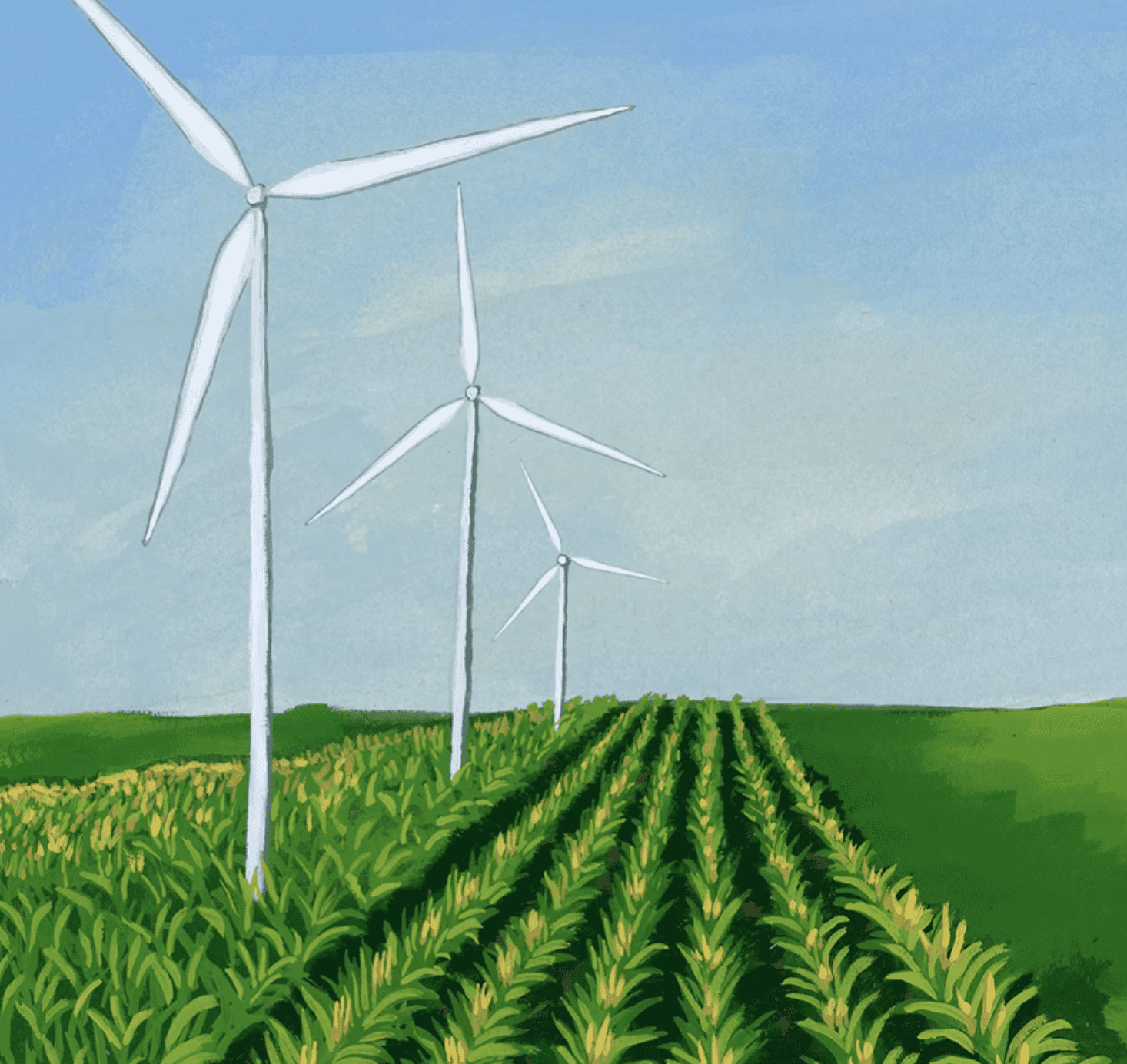

This story is part of Red State Green Energy, a series about renewable energy endeavors in places where conservative politics or pro-business attitudes reign. This series is funded in part by a grant from the Solutions Journalism Network’s Business & Sustainability Initiative.
With a childhood steeped in coal dust and a budding career powered by wind, few embody West Virginia’s transformation more than Logan Reel.
The grandson of a coal miner, Reel keeps with him his grandfather’s long, painful death from pneumoconiosis — black lung disease — in 2012. Reel was 15 years old. “It really took a toll on him,” he says. An Air Force veteran, Reel might have followed in his grandfather’s footsteps if not for an economic sea change that has taken hold around his birthplace, in the coal mecca of Northeast West Virginia.

With support from the G.I. Bill, Reel recently graduated from Eastern West Virginia Technical College where his career as a wind turbine worker took off. After a year and a half in East Tech’s wind program, in July 2021 Reel started working for Clearway, a $5.8 billion energy company headquartered in San Francisco. Now he maintains the wind turbines at Clearway’s new, 23-turbine Black Rock Wind Farm, those that generate clean energy atop the same picturesque West Virginia mountains that once provided this region its seemingly endless supply of coal.
At 24, Reel is too young to remember King Coal’s heyday, yet not old enough to recall the first turbines going up on these summits. In some ways, this lack of context serves him well. Without a dog in the political infighting wind power has brought to this region, Reel has a laser-focused optimism that is propelling his burgeoning career quickly forward.
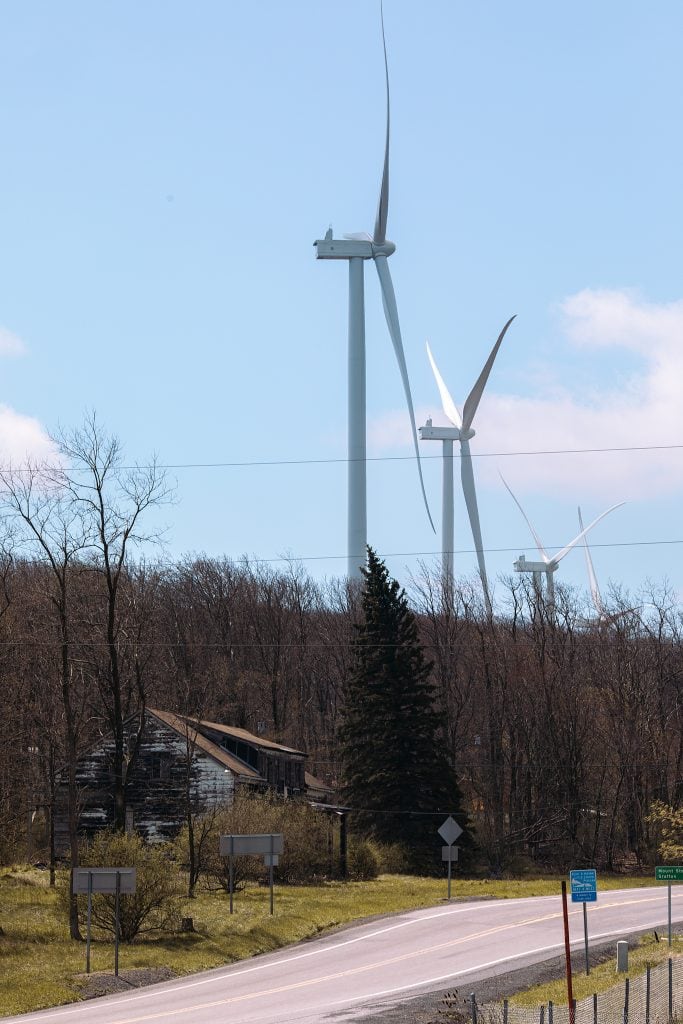
“People are very opinionated,” he said. “They either think it’s the coolest thing ever, or they associate you [with wind power] and they hate you, as well.”
Reel is part of a massive paradigm shift stretching from the hilltops of Allegheny-area Pennsylvania to the pits of Southern Tennessee, the latter of which has seen a whopping 79 percent drop in coal production. Historic coal towns and counties, majority right-leaning and Trump-favoring, are now reluctantly accepting Big Wind with relatively open arms.
And Big Wind is returning the embrace with hundreds of thousands, if not millions, in tax incentives, and lucrative careers to offer would-be miners and their kin. For West Virginia wind technicians like Reel, who make $77,000 a year on average, the shift to wind has opened up a world of possibilities.
“I’m doing well,” he said. “I’ve got big plans.”
Some notable milestones have marked the 158-year history of Mineral County, West Virginia.
Nancy Hanks, the mother of Abraham Lincoln, was rumored to have been born and raised in the saddle of Doll’s Gap. As was Henry Gassaway Davis, infamous loser to Teddy Roosevelt. At the turn of the century, Mineral County prospered as its coal, carted across the country on trains (coal-powered themselves), fueled the growth of a rapidly expanding nation. Semi-bituminous coal — coal heated up in rotary kilns — from Mineral County was shown off at the 1904 St. Louis’ World’s Fair, and purportedly powered Admiral George Dewey’s fleet at the Battle of Manila Bay.
But Mineral County has changed, particularly over the last 15 years, shifting towards a reputation more defined by what’s above ground than beneath it.
That is to say, its wind.
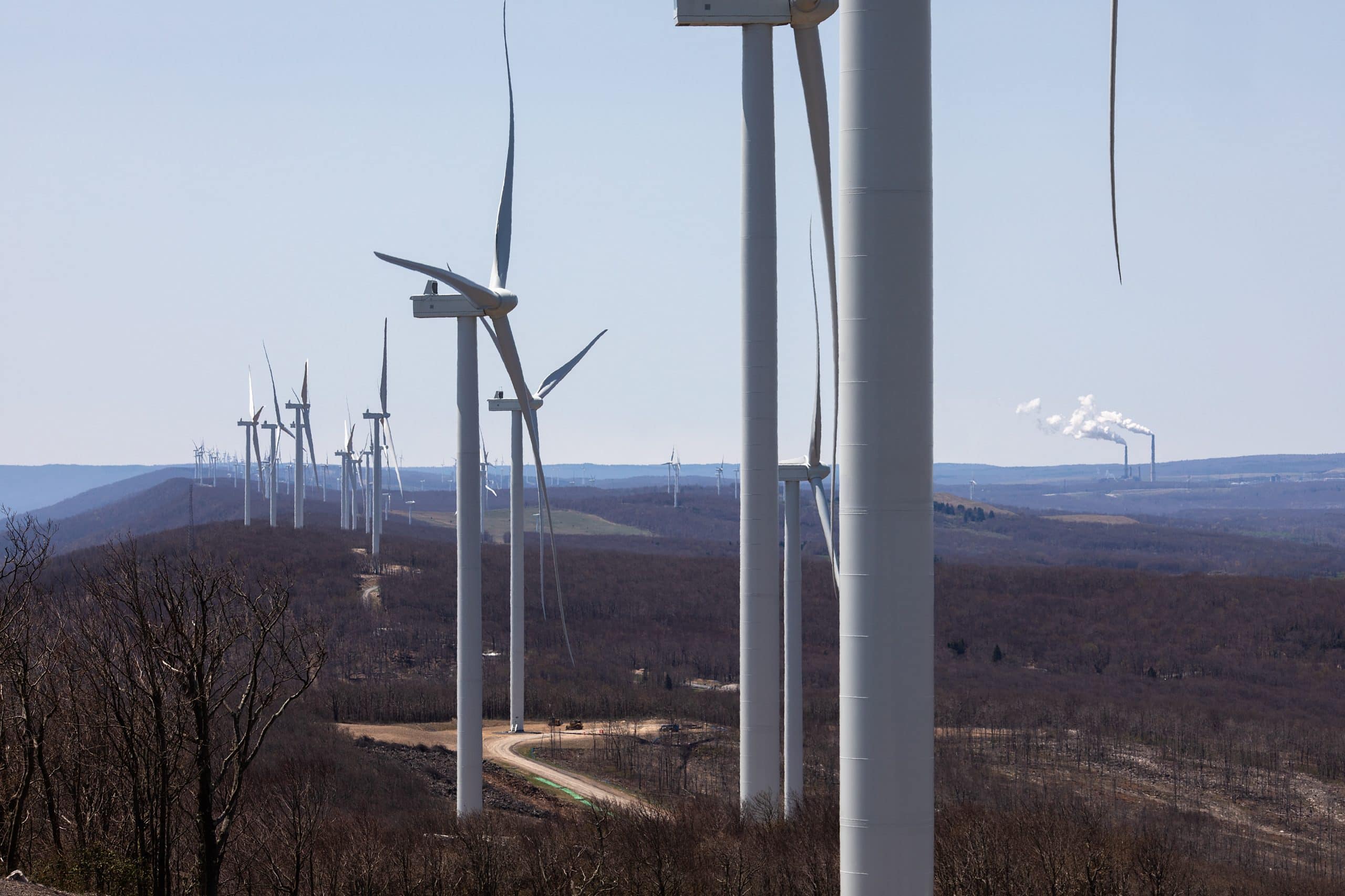
It has had little choice. Driven by the Fortune 500 preference for cleaner energy, West Virginia’s coal economy has been vacating as power plants suck in more wind and solar. According to the U.S. Energy Information Administration’s Annual Coal Report of 2022, production plummeted 28 percent from 2019 to 2020, the equivalent of shuttering 17 mines. Today, there’s only one coal plant left in Mineral and two in nearby Grant County, as utility companies like Appalachian Power phase out fossil fuels — at a rate, in Appalachian’s case, of about 10 to 12 percent a year.
Despite these market forces, local and state politics make replacing fading coal with wind turbines difficult. In Pennsylvania’s southern wind cluster to the north, 26 farms in the state’s Allegheny Mountain ridge contribute to only two percent of the state’s energy usage. Wind energy advocates like Joseph Minott, who’s been decrying fossil fuel addiction for 40 years at the Clean Energy Council, blames state legislators for shooting down promising pro-wind bills.
“Anything that’s not a fossil fuel, it’s very hard to move in Pennsylvania,” Minott says. Even though there’s strong support for RGGI, Minott says entrenched politicians stonewall most attempts to bolster the state’s wind energy subsidies. “It’s not only sad, given the recent climate change reports and what have you, but I think it borders on the criminal.”
Over the border in Keyser, these politics appear to be slowly morphing, where local executives are finding economic incentives to wave green energy behemoths into town.
“I will say we’re kind of unique, because we have coal and we have wind,” says Callie Taylor Dayton, executive director of Grant County Development Authority, who helps steer wind-interested high schoolers into a wind tech program in Petersburg. “We’re ready and kind of willing to step in and get kids on the track of, ‘You can stay here! There’s other job opportunities, more in the wind and energy development area.’”

The jobs Dayton is rallying for are mostly hosted by Clearway, the company Logan Reel works for. In 2008, a year after new wind turbine tax rules facilitated development across the state, Clearway constructed its first two Northern Appalachian wind farms just north of the West Virginia panhandle. A 2007 wind study painted the area as energy-rich — especially Mineral and Grant — and Clearway began making overtures to local officials in both counties. Three years later, Clearway gave Mineral County its first turbines: a 54-megawatt farm named Pinnacle just outside the town of Keyser.
The deal seemed sweet to Richard Lichliter, a Mineral County commissioner since 2011. After all, between the two counties, only three stripped coal mines still operated.
“There was no longer much of a demand for coal right here,” says Lichliter, who considers himself a lifelong environmentalist.
Clearway’s turbines, on the other hand, would start infusing the county with cash even before they were built. The deal gave Mineral between $200,000 and $300,000 in tax revenue, plus $133,000 to 21 grantees in community benefit funds (combined with Pinnacle’s). If the little league needed a new backstop or the fire department needed new hoses, they could ask Clearway to foot the bill.
“If the Historical Society needed to put new doors and windows on their historical home,” Lichliter said, “they can apply and get funding for that.”
Reliable infusions of cash didn’t warm everyone to the idea of turbines. The months leading up to Pinnacle’s construction were marked by increasingly vocal protests. Black bear hunters warned of the destruction of their sporting grounds. Others cited “bat studies” as proof of the turbines’ ecological threat. Lichliter, a trained forester who speaks in a soft, wistful tone about Appachlachian beauty, worked to assuage these fears. He knew that this was a chance for Mineral County to replace a disintegrating industry and grow a new, more sustainable regional economy — but slowly, so as not to scare the coal holdouts.
Weighed down by negative news?
Our smart, bright, weekly newsletter is the uplift you’ve been looking for.“I’m a middle road kind of guy,” he said. “Coal is going to be progressing out, but I’m not one to stop it today. It needs to be done in, well, an easy manner.”
Not everyone agrees. Although most in Mineral County are hesitant to resurface 2019-era politics, former President Trump’s repeated criticisms of wind power have crystallized many mindsets here. In 2016 and 2020, three out of four Mineral and Grant residents voted Republican. (The state has been solidly red since 2000.) The buzz today, whether discussed over a pint at one of Keyser’s three sports bars, or over salmon at the tony Candlewyck Inn, reveals a split that Black Rock has only exacerbated.
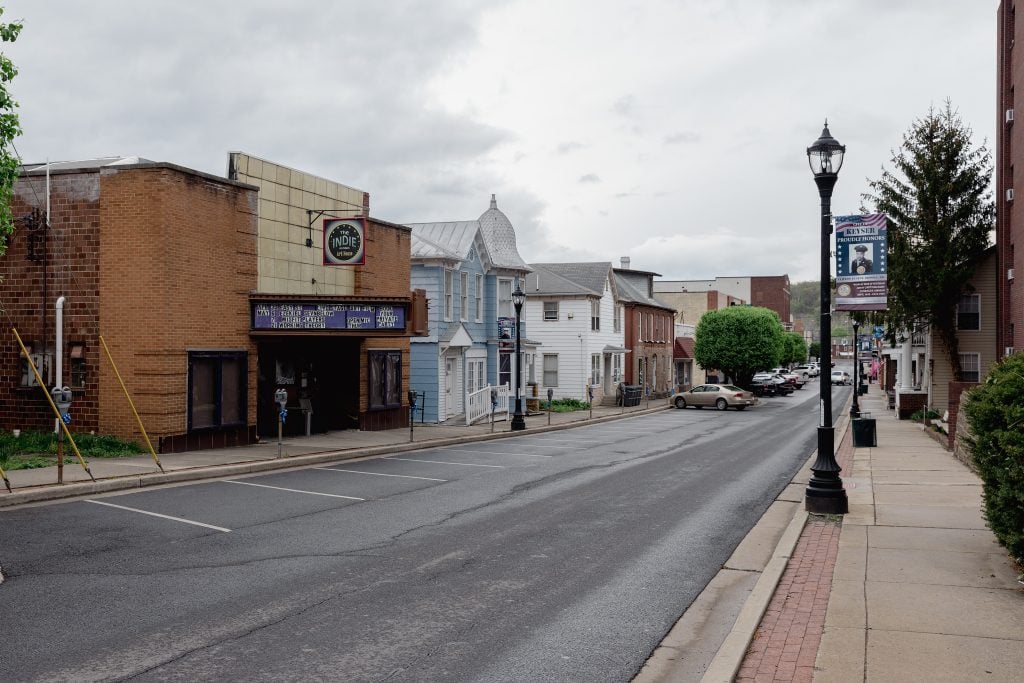
You either see job prospects in the turbines, “or you hate the sight of them,” says 33-year-old Justin Secrist, a plant manager at Automated Packaging Systems in Keyser, eating dinner at the 3rd Base Sports Bar & Grille on North Mineral Street. “Except for that sweet old lady who’s probably blind? Ninety-eight, 99 percent of [us] hate it.”
Secrist, whose father was a coal miner, believes that Clearway’s promises of Black Rock’s benefits were exaggerated. “They came in and said, ‘We’re going to bring in these big screen TVs.’ They tried to glorify it for the locals. Shortly after the install? Nothing. They’re just loud, they’re noisy.”
In July 2019, an anonymously created website titled “Stop Black Rock Wind Farm” became the de facto voice for the local resistance. “Would you like these monstrosities near your home?” read a post on August 6, 2019. “They don’t belong on our mountain. They belong more than 5 miles offshore.”
Like every wind farm built in West Virginia, and across the US, Black Rock was finished in the fall of 2021 after numerous rounds of strict vetting that included a year of testimony and siting studies. Traffic engineers and visual resource specialists scrutinized the project area. Wildlife biologists scouted for threats to endangered species. Scientists projected acoustic or visual nuisances.
Lichliter made it a point to ensure Black Rock was as harmless to Green Mountain as Pinnacle before it — for both human and animal kind.
“I’ve never seen a report that has indicated any unusual activity or death,” Lichliter says.
For those who remain unconvinced by the studies and scientific reviews, Clearway has Doug Vance, a coal miner’s son who “worked 12 hour shifts in a dirty coal plant” in Grant Town, West Virginia, for 16 years. In 2008, Vance left fossil fuels to work for a Clearway predecessor, named Edison Mission, who had jumped on the renewables craze. Like many raised in panhandle culture, Vance toggles between dual identities as a worker in the energy sector.
Last May, he took over as project manager at Black Rock, where he sees himself as a human embodiment of Clearway’s vow to be a “good corporate neighbor.” A married father of four, Vance presents himself with a patriarchal West Virginian charm: one part good ol’ boy, one part serious steward of the fruits of the industry.
On May 6, Black Rock’s gravel parking lot swarms with 115 employees, executives, politicians and Mineral County locals to cut the ribbon officiating Clearway’s latest mark on Green Mountain. A week before, in the midst of cleaning house, Vance drives his RAM 2500 to the mountaintop leveled for Black Rock’s 23 turbines. Up on the butte — “little flat” in West Virginia slang — he circles Turbine 23 to demonstrate the sheer monstrosity of the 354-foot-tall Siemens Gamesa. With blade tips moving at 180 miles per hour, 14 revolutions a minute “fully pitched,” the effect is, one could say, sublime: the whoosh hammers air down at you like heaping buckets.
“To me, it’s not that loud,” Vance said, craning his neck. “Not any louder than my A/C at home.”
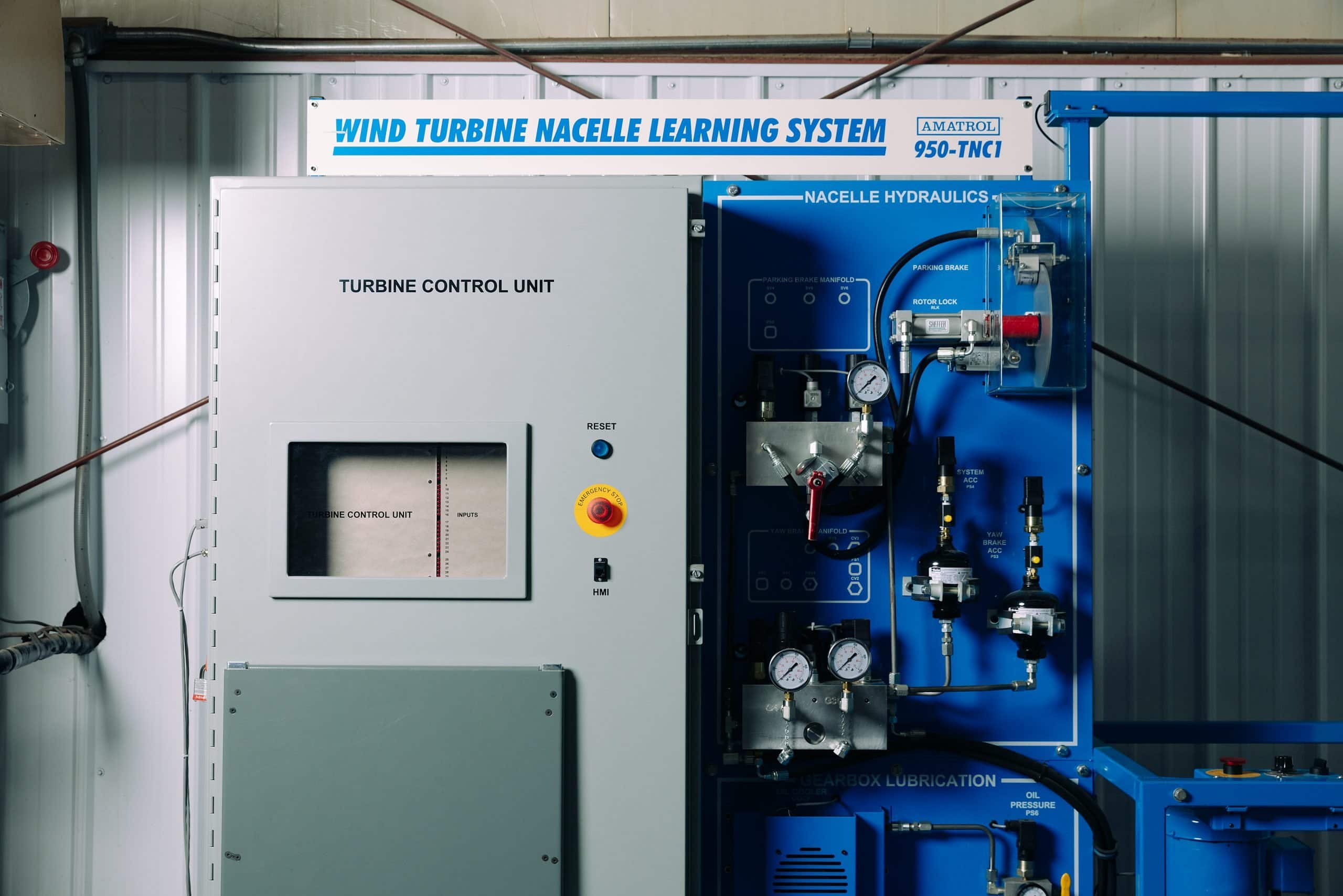
Vance sees it as part of his job to make sure locals perceive Clearway’s turbines as minimally impacting their lives, despite Donald Trump or other wind haters telling them otherwise.
“I’ve always said, in West Virginia, there’s a lot of stereotypes — ‘backwoods,’ ‘uneducated’ — things like that,” Vance says.
But misperceptions about how energy generation works happen on both sides. He cites an allegorical story from back in his days working at Grant Town Power. A slew of visitors were complaining about the nearby outpouring of smoke. Vance was baffled. The “smoke” was actually steam.
“The only way to get rid of stereotypes is to tell the truth,” Vance explained. “When you get information out there, people understand: ‘Oh, that’s not smoke, that’s vapor.’”
Thirty-three miles south of the Grant-Mineral border — and 29 miles south of the lakeside Mt. Storm Power Station, which still generates 1,600 megawatts from 15,000 tons of bituminous coal — is Eastern West Virginia Technical College, where Logan Reel built his career in green energy.
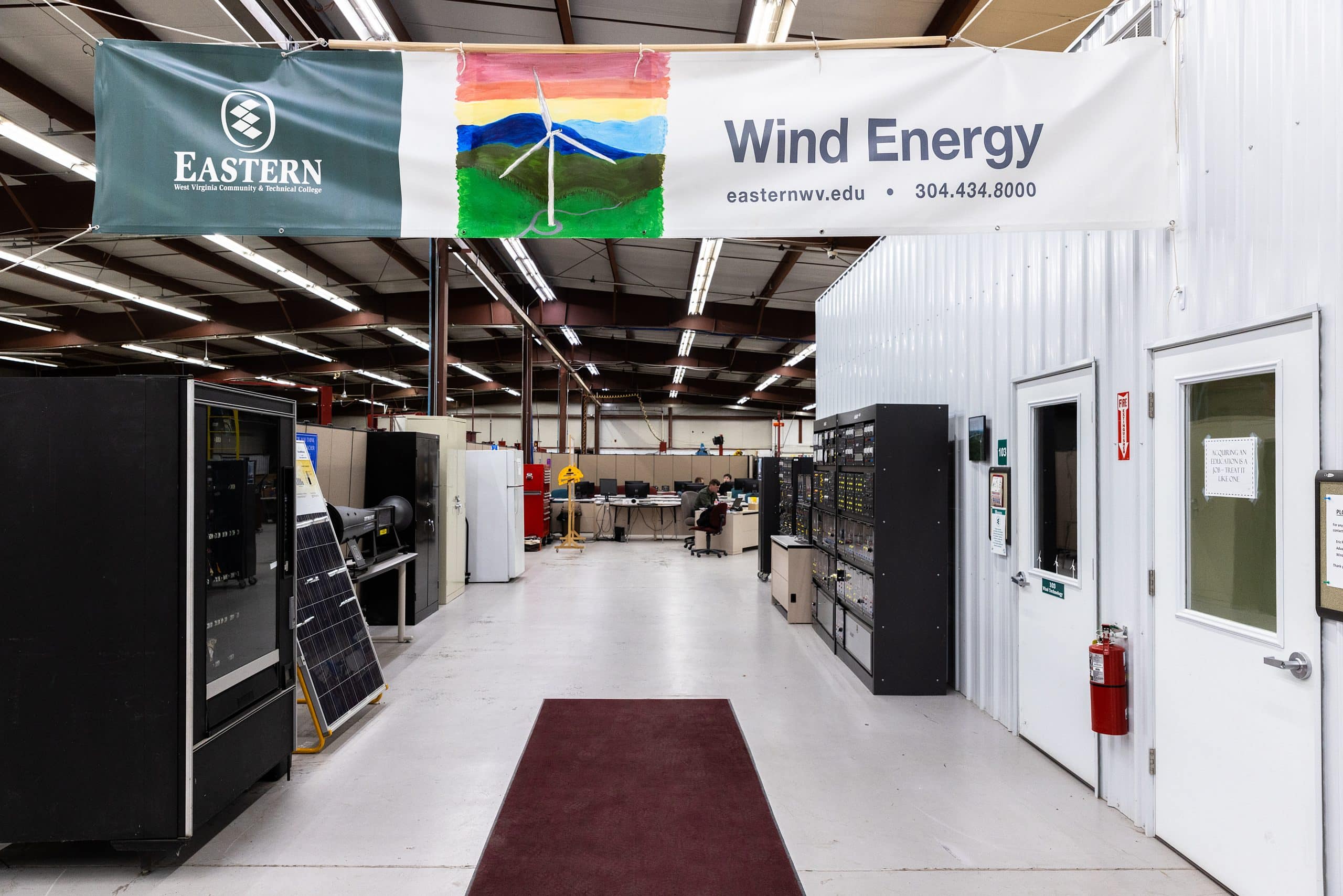
Half auto mechanic school, half turbine college — literally divided down the middle — Eastern Tech is ground zero of Big Wind’s future in the West Virginia panhandle. Graduating a half-dozen wind technicians each year, most bound for Clearway’s farms, the school, lodged in the middle of a nondescript industrial park, is a quiet symbol of the New Miner.
Purposefully so. It’s the only school of its kind in the state.
“This here is a hub that got damaged, this one’s probably from the 1990s,” Curtis Hakala, Dean of Eastern Tech, says during a tour of the school’s airplane hangar-sized outdoor turbine lab. Over here is a Vesta brand nacelle. There, a 25-year-old nose cone. “It looks like a space capsule or something, right?” Hakala said, kicking the part to get a gong-like reverberation.
Almost entirely subsidized by the state, Eastern Tech could be a budding energy worker’s best friend. Its four-year program can be completed in just two; and most low-income attendees — the majority of Eastern’s student body — ride by on Pell Grants. “But if they don’t,” Hakala said, walking past a switchboard, “then West Virginia Invest kicks in and covers the rest of their tuition.” (As long as, of course, they pass a drug test and keep a 2.0 GPA.)
Although Covid-19 slowed Eastern’s applicant stream, Hakala says: “We had five graduates last year, and they all got jobs at Clearway.”
Including Reel. Though he’s comfortable climbing Black Rock towers, he’s doesn’t feel tied down to the profession.
“It’s a stepping stone,” he says. “In the next five years, who knows?”





